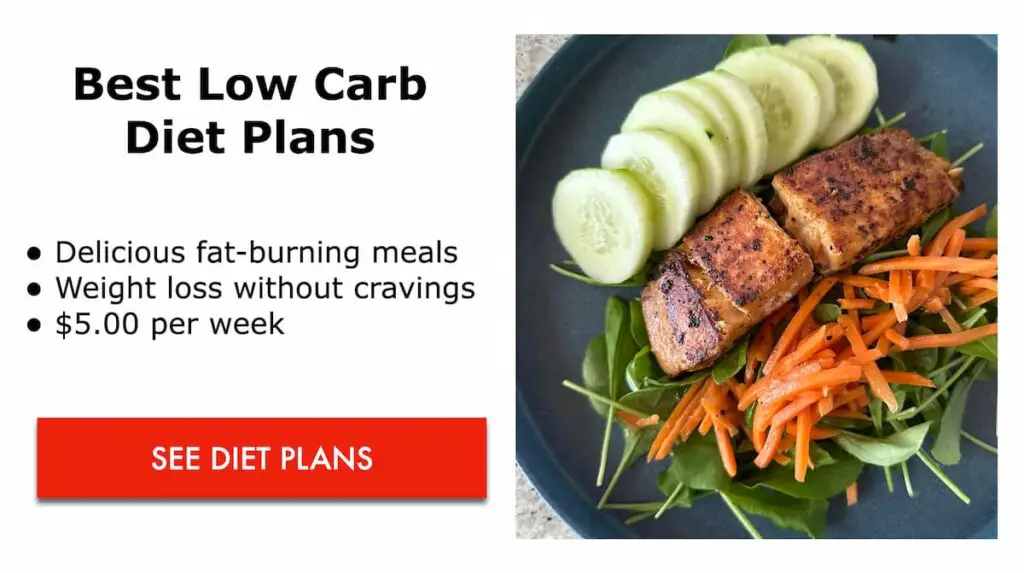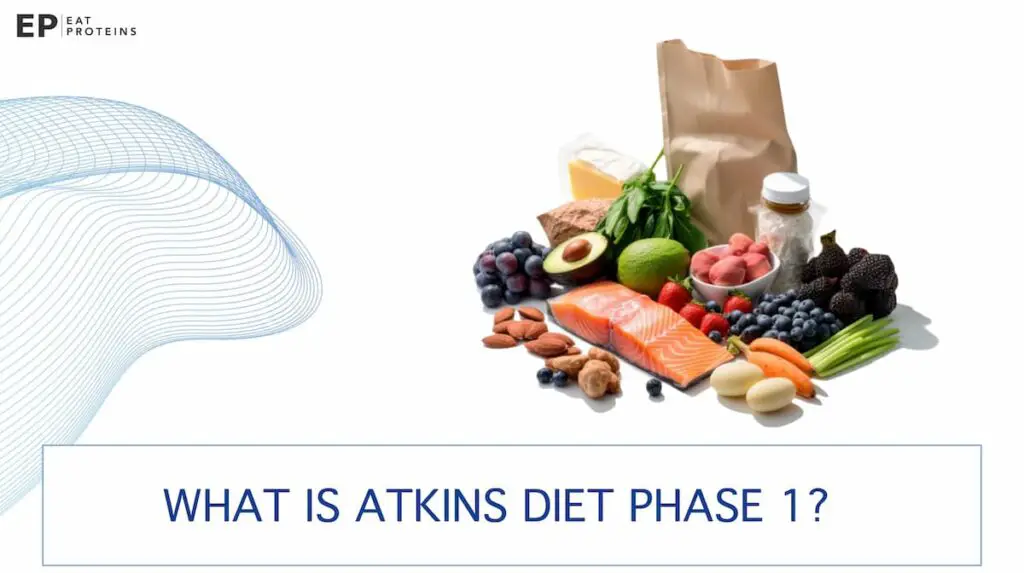Atkins Phase 1, also known as the Atkins Induction phase, is designed to kickstart your weight loss by shifting your body from burning carbs to burning fat. The core goal of Atkins Phase 1 is to slash your daily net carbs, aiming for a range of 18 to 22 grams of net carbs per day.
When asking how long you should stay in the Atkins induction phase, it’s important to consider both individual goals and scientific evidence. According to a 2020 review in the Journal of Nutrition Health and Aging by A.D. Mooradian from the University of Florida College of Medicine, low carbohydrate diets can be effective for short-term weight loss and glycemic control but may have adverse effects when carbs are severely restricted (< 50 gm a day) for a long period.
So, the length of the Atkins induction phase varies based on your weight loss goals, but it can be as short as two weeks for some people. During this time, you should aim for three meals and two snacks per day to avoid going more than three to four waking hours without eating.
To know how much weight you can expect to lose in Atkins diet phase 1, it’s important to consider various studies. A 2021 study by Lingli Cai and colleagues from Shanghai Jiao Tong University found that a low-carbohydrate diet led to a weight loss of approximately 3.56 kg in 3 weeks. However, a 2022 Cochrane review by Celeste E Naude from Stellenbosch University suggests that low-carb diets like Atkins result in little to no difference in weight loss compared to balanced-carb diets over up to two years. As you can see, the weight loss effects of the Atkins induction phase can vary depending on individual factors and the duration of the diet.
This guide outlines 9 steps, which are listed below, on how to successfully navigate through Atkins Diet Phase 1. It covers topics such as the food list for Phase 1, common side effects, and how to manage a weight-loss plateau during the induction phase.
- Refer to the Phase 1 Atkins food list for approved foods
- Craft a 7-day meal plan specifically for Atkins Phase 1
- Pick a snack that’s compliant with Atkins Phase 1
- Explore recipes that are suitable for Atkins Phase 1
- Use meal replacement bars that are approved for Atkins Phase 1
- Look for Atkins shakes that are compatible with Phase 1
- Count your daily net carbs to stay within the Phase 1 limit
- Make a shopping list tailored to Atkins Phase 1 essentials
- Avoid alcohol while you’re in Atkins Phase 1
EatProteins.com is a reader-supported platform. Purchases made through our links may earn us a commission at no extra cost to you.
1. Refer to the Phase 1 Atkins food list for approved foods
The first step is to refer to the Phase 1 Atkins food list for approved foods. This is crucial because Phase 1 is designed to kickstart your metabolism into burning fat for fuel instead of carbohydrates.
Experts like Dr. Robert Atkins himself have emphasized the importance of adhering to the approved food list to achieve optimal results. A common mistake people make is not creating the list and assuming that all low-carb foods are allowed, which can hinder progress. First, download or print the Atkins Phase 1 food list from the Eat Proteins website to execute this step.
2. Craft a 7-day meal plan specifically for Atkins Phase 1
Crafting a 7-day meal plan specifically for Atkins Phase 1 is a crucial step in setting yourself up for success because it takes the decision-making stress off your plate, literally. This step, often referred to as meal planning or meal prep, involves organizing your kitchen and planning out your meals for the week, ideally once or twice a week.
A study by Pauline Ducrot and colleagues from Université Paris 13 suggests that meal planning is associated with a healthier diet and less obesity, validating the importance of this step. A common error people make when creating an Atkins diet 7-day meal plan is underestimating the time it takes; don’t just allocate 10 minutes, make an appointment with yourself for proper planning. To execute this step effectively, make a non-negotiable schedule, stick to it no matter what, and ensure you have all the necessary kitchen tools like measuring cups, a food scale, and storage containers.
3. Pick a snack that’s compliant with Atkins Phase 1
Choosing a snack that’s compliant with Atkins Phase 1 means selecting an option that fits the low-carb, high-fat, and moderate-protein guidelines of this phase. A 2016 study by Valentine Yanchou Njike from Yale University emphasizes the importance of snack choices in weight management. A common error people make is choosing snacks that are high in carbs or protein, which can kick you out of ketosis.

For Atkins Phase 1, a compliant snack could be a handful of almonds. If almonds are not your thing, a good alternative includes opting for other low-carb snacks like cheese cubes or avocado slices. This step is relatively easy and suitable for all age groups who are following the Atkins diet.
4. Explore recipes that are suitable for Atkins Phase 1
Exploring recipes that are suitable for the Atkins diet Phase 1 is an essential step in ensuring you stick to the low-carb, high-fat, and moderate-protein guidelines of this initial phase. To do this step, first, identify your dietary restrictions and preferences; second, search for Atkins Phase 1-approved recipes online or in Atkins cookbooks; and third, prepare a weekly meal plan based on these recipes.
Common pitfalls to avoid include choosing recipes that are too complicated or time-consuming. At Eat Proteins, we recommend keeping things simple by opting for easy-to-follow recipes. Helpful tools to consider are a carb-counting app and a kitchen scale for accurate measurements. Alternatively, you can subscribe to a low-carb meal delivery service or hire a nutritionist familiar with the Atkins diet.
5. Use meal replacement bars that are approved for Atkins Phase 1
Using meal replacement bars that are approved for Atkins Phase 1 is another step in adhering to the low-carb, high-protein guidelines of the diet. This is important because these bars are specifically formulated to meet the macronutrient ratios of Atkins Phase 1, ensuring you stay in ketosis for optimal fat burning. A 2019 meta-analysis by Nerys M Astbury and colleagues from the University of Oxford found that meal replacements led to greater weight loss at one year compared to other diets.
A common mistake people make during the Atkins induction phase is choosing bars that are high in sugar or carbs, which can kick you out of ketosis. Instead, choose the bars that have up to 5 grams of net carbs per serving. One of the best choices are No Cow dairy-free protein bar which has 21 grams of plant protein and only 4 net carbs.

6. Look for Atkins shakes that are compatible with Phase 1
When you’re on Atkins Phase 1, it’s crucial to find shakes that align with the phase’s low-carb requirements, as not all shakes make the cut. A 2021 Meta-Analysis in the Journal of the Academy of Nutrition and Dietetics by Jihyun Min and colleagues supports the effectiveness of meal replacements like shakes in weight loss, especially when they make up a significant portion of your daily energy intake.
A common mistake people make is not checking the nutritional information, leading to accidental carb overload. To find shakes suitable for the Atkins diet induction phase, read the nutritional label to ensure the shake has less than 2g of net carbs per serving. Also check for added sugars, and high-glycemic sweeteners, and taste-test a single shake before buying in bulk to make sure it suits your palate. Financially, shakes can range from $2 to $5 per serving. You can either buy pre-made Atkins shakes or make your low-carb shakes at home.
7. Count your daily net carbs to stay within the Phase 1 limit
In the Atkins induction phase, it’s crucial to count your daily net carbs to stay within the limit, which is usually 18-22 grams of net carbs per day. A study by Marga Ocké and colleagues from the National Institute for Public Health and the Environment in the Netherlands validates the importance of meticulous food tracking for accurate dietary intake.
Counting your net carbs is important because carbs are hidden everywhere, such as in added sugars, beverages, and even condiments. A common mistake I often see people make during the Atkins induction phase is forgetting to include items like coffee creamers, salad dressings, and other condiments in their carb count.
To get this right, read the nutritional label of every food item and subtract the fiber from the total carbs to get net carbs. Use a meal journal or an app like MijnEetmeter to log every food, snack, or drink consumed. Review your log at the end of the day to ensure you’ve stayed within your net carb limit.
8. Make a shopping list tailored to Atkins Phase 1 essentials
Creating a tailored shopping list for Atkins Phase 1 is important for ensuring you stick to the low-carb, high-fat, and moderate-protein requirements of this phase. A 2015 study published in the Journal of Nutrition Education and Behavior by Tamara Dubowitz and colleagues found that using a grocery list is associated with a healthier diet and lower BMI, especially among high-risk adults. A common mistake people make is not sticking to the list, leading to impulse buys that don’t align with the Atkins plan.

Use the Atkins app or website for a list of approved foods and meal plans. Check your pantry to see what you already have and cross-reference with your list. Organize the list according to the layout of your grocery store to make the shopping trip efficient. Also don’t shop when you’re hungry to avoid impulse buying, and avoid the aisles that contain high-carb foods.
9. Avoid alcohol while you’re in Atkins Phase 1
The next step in Atkins Phase 1 is to completely avoid alcohol. This is crucial because alcohol is high in empty calories and can interfere with ketosis, the fat-burning state you aim to achieve in this phase. A 2011 systematic review by Carmen Sayon-Orea from the University of Navarra suggests that alcohol consumption can lead to weight gain, further emphasizing the importance of avoiding alcohol during Atkins diet Phase 1.
A common mistake people make is thinking a small amount of alcohol won’t hurt; however, even a small glass of wine can set you back. Allocate at least one week to get used to this alcohol-free routine. We recommend removing alcoholic beverages from your home and replacing them with non-alcoholic alternatives. Keep a daily food and drink journal to hold yourself accountable. Financially, you might save money by not buying alcohol.
What is Atkins diet phase 1?
Atkins Phase 1, also known as the Atkins 20, is the first stage of the Atkins diet designed to kickstart weight loss by putting your body into ketosis.

In this phase, you limit your daily net carb intake to an average of 20 grams, focusing on high-quality proteins and fats. You should stay in Atkins Phase 1 for at least two weeks, but you can extend it up to several months if you have a lot of weight to lose.
Atkins Phase 1 can be effective for people with diabetes as it restricts carbs, which helps regulate blood sugar levels. Seniors also can participate in Atkins Phase 1, but it’s essential to consult a healthcare provider first, especially if they have existing medical conditions or are on medication.
What are the benefits of Atkins Phase 1?
The benefits of Atkins Phase 1 include rapid weight loss, improved blood sugar control, and increased energy levels due to the body using fat for fuel.
- Rapid Weight Loss: The low-carb approach helps you shed pounds quickly.
- Improved Blood Sugar Control: The restricted carb intake can help regulate blood sugar levels.
- Increased Energy Levels: Your body switches to using fat for fuel, which can boost your energy.
- Enhanced Mental Clarity: Some people report better focus and mental clarity when in ketosis.
- Reduced Cravings: The high-fat, moderate-protein diet can help curb hunger and reduce food cravings.
What are the potential side effects of Atkins Phase 1?
Potential side effects of Atkins Phase 1 include the “Atkins flu,” as well as constipation due to the low fiber intake.
- Atkins Flu: You might experience fatigue, headaches, and irritability as your body adjusts to low-carb intake.
- Constipation: The low fiber content in the diet can lead to digestive issues like constipation.
- Nutrient Deficiency: The restrictive nature of Phase 1 might cause you to miss out on essential nutrients.
- Bad Breath: Ketosis can sometimes result in bad breath, often described as fruity-smelling.
- Increased Cholesterol: Some people experience a temporary increase in cholesterol levels when starting the diet.
To manage side effects in Atkins Diet Phase 1, focus on staying hydrated, consuming enough electrolytes, and gradually easing into the carb restrictions. Consult your healthcare provider if symptoms persist.
What are the reasons for not losing weight in the Atkins Induction Phase?
Three common reasons for not losing weight during the Atkins Induction Phase are listed below.
- Consuming hidden carbs
- Overeating protein
- Not tracking caloric intake
How can you overcome a weight loss plateau in the Atkins Induction Phase?
To break through a weight loss plateau, follow these five steps:
- Re-evaluate your carb intake
- Increase physical activity
- Try intermittent fasting
- Adjust your fat-to-protein ratio
- Consult a registered dietician for personalized advice
How do you track your progress during Atkins Phase 1?
To track your progress in Atkins Phase 1, use a food diary to log your daily carb intake, and regularly weigh yourself or take body measurements. Some people also use ketone test strips to confirm they’re in ketosis. When dining out on Atkins Phase 1, opt for protein-based dishes like grilled chicken or steak and substitute starchy sides with low-carb vegetables. Always ask for dressings and sauces on the side to control carb intake.
What’s the average weight loss on Atkins Diet Phase 1?
When asking about the average weight loss on the Atkins diet’s Phase 1, a study conducted by Bernard V. Miller and colleagues, published in “Metabolic Syndrome and Related Disorders” in 2003, found that participants lost an average of 4.8 kg (about 10.6 pounds) during the first two phases of the Atkins Diet, each lasting two weeks. The study involved 18 adults with an average BMI of 36.6 and showed that caloric intake dropped significantly, from an average of 2,481 kcal/day on their “usual” diets to an average of 1,400 kcal/day during the Induction phase.
How does Atkins Phase 1 differ from other diet phases?
Atkins Phase 1 is more restrictive than later phases, limiting you to 20-25 grams of carbs per day to induce ketosis. In contrast, later phases gradually reintroduce more carbs and offer a broader range of food options.
How do the goals of Atkins Phase 1 differ from those of Phase 2?
The primary goal of Phase 1 is to transition your body into ketosis and start losing weight quickly, while Atkins Phase 2 shifts the focus to finding your carb balance, allowing for gradual weight loss and long-term sustainability.
In terms of weight loss expectations, Phase 1 often results in rapid initial weight loss due to the extreme carb restriction, while Phase 2 aims for a more steady and sustainable rate of weight loss as you reintroduce carbohydrates.
What beverages are allowed during Atkins Phase 1?
During Atkins Phase 1, you can drink water, herbal teas, and limited amounts of caffeine. Avoid sugary drinks, alcohol, and excessive caffeine, as they can interfere with ketosis.
